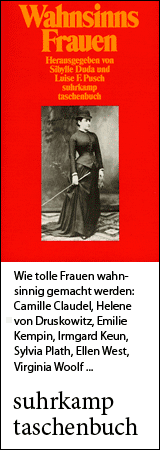
(Marie-Rosalie Bonheur)
born on March 16, 1822 in Bordeaux, France
died on May 25, 1899 in By Castle near Fontainebleau, France
French animal painter and sculptor
125th anniversary of her death on May 25, 2024
Biography
Her school education was only rudimentary and ended when she was 13. But Rosa Bonheur learned her craft thoroughly - drawing and coloring in the Parisian studio of her father, a moderately successful portrait and landscape painter who, after the early death of his wife, raised his four children alone and, following his Saint-Simonist ideals, allowed his daughters (Rosa was the first-born) the same freedoms as his sons. To copy the old masters, the 14-year-old spent many hours in the Louvre, where she was nicknamed “The Little Hussar” because of her boyish appearance. Later, she went to the Paris slaughterhouses and the horse market to study anatomy and to sketch animals - dressed as a man.
At 19 she exhibited at the Paris Salon, at 26 she received her first major government commission for Ploughing in the Nivernais (now in the Musee d'Orsay), and at 31 she completed her most famous painting. The Horse Fair, a giant painting (2.5m x 5 m), caused a stir among the public and critics and established her fame as the most important animal painter of the 19th century. It was also a sensational financial success. She used the proceeds to purchase the Château de By, a country estate on the edge of the Fontainebleau Forest, where she lived and worked with her partner Nathalie Micas, her mother and an extensive private zoo (including lionesses).
The painter was invited to court and showered with public honors - Empress Eugenie personally decorated her with the French Legion of Honor - although her private life did not exactly conform to convention. Rosa Bonheur had met Nathalie Micas, two years her junior, at the age of 14 and never separated from her since then. When Micas died in 1889 at the age of 65, Bonheur fell into a deep depression.
Two encounters from overseas defined the last years of her life - she met Buffalo Bill Cody, who was touring Europe with his Wild West show, and used the troupe's seven-month stay in Paris to create numerous paintings and sketches based on Indian and cowboy motifs. And she met a 33-year-old American colleague, Anna Klumpke, who became her companion, wrote her biography, painted her portrait and - to the horror of relatives - was her sole heir.
Bonheur died at the age of 77 and was buried in the Pere-Lachaise cemetery in Paris next to Nathalie and Mrs. Micas. Anna Klumpke was also buried there.
(Text from 1998; translated with DeepL.com; edited by Ramona Fararo, 2024.)
Please consult the German version for additional information (pictures, sources, videos, bibliography).
Author: Andrea Schweers
Quotes
In reality, as far as males are concerned, I'm only interested in the bulls I paint. (Rosa Bonheur)
Rosa Bonheur's unique public success in the 19th century can certainly be explained by her perfect craftsmanship and her choice of subject - the realistic depictions of animals and landscapes corresponded to the tastes of a bourgeois public that no longer identified with the paintings of earlier times favored by the nobility. But just as important was her exceptional role as a woman in an art world dominated by men. She had “star qualities” that she skillfully exploited. Supported by her agent Gambart, she was able to hold the interest of a public that was at times fascinated and at times scandalized by her across the decades, thus ensuring a continuing interest in her paintings.
(Schweers, Andrea (2005): “Drei Frauen im Glück. Das Leben der französischen Tiermalerin Rosa Bonheur (1822-1899) und ihrer Gefährtinnen Nathalie Micas (1824-1889) und Anna Klumpke (1856-1942)”. In: Horsley, Joey; Pusch, Luise F. Hg. 2005: Berühmte Frauenpaare. Orig.-Ausg., Frankfurt am Main: Suhrkamp-Taschenbuch, 3404).
If you hold the rights to one or more of the images on this page and object to its/their appearance here, please contact Fembio.



